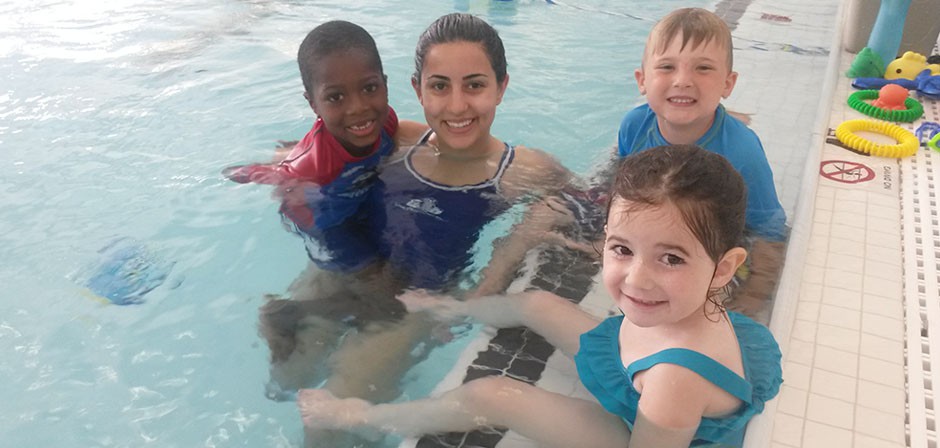
March is here, temperatures are warming up, and pool time is upon us! That said, kids swimming safety is top-of-mind for parents making it a great time for some water safety refreshers. Here are our top drowning prevention tips to keep in mind year-round:
Watch Out for Small Bodies of Water
When swimming safety for toddlers comes to mind, a lot of people think learning to swim or following precautionary measure around large bodies of water like the pool, but forget the dangers small bodies of water has. Babies are at more of a risk to drown at home in small bodies of water like bathtubs, toilets or buckets. To prevent accidents inside your own home immediately after use, make sure any tubs, buckets, or small outdoor pools are emptied. It’s also a good idea to turn them upside-down. Make sure sinks and baths are always drained completely when not in use and cover all toilet seats. And for parents with younger children and toddlers, toilet seat locks are well worth the investment.
Keep a Watchful Eye on Your Children Around the Water
Regardless of being inside or outside, children need close supervision when around any type of water. Parents with babies or toddlers or children just learning to swim should be within arms-length distance at all times; preferably in the water with them. Cell phones should be charged and available in case of emergency but stowed away safely to avoid distraction.
Always Have a Designated Water Watcher – and Rotate Shifts
Swim parties and gatherings are wonderful opportunities for children to play and socialize, but a group of children and parents gives an opportunity for a child to be overlooked. You may think that since there are tons of adults around, your child is safely being watched by someone, but keep in mind, other adults may be thinking the same thing resulting in a gap of who’s watching the children in the pool. Make sure that at least one to two parents are sitting around the pool and constantly watching the children without distraction. Rotate shifts every 15-30 minutes, and better yet, place some water watchers directly in the water with children.
Know CPR
In a worst-case-scenario, knowing CPR can save a child’s life while you wait for an ambulance to arrive. Keeping blood pumping through a child’s brain (during compressions) dramatically increases their chances of survival. Don’t know where to go? Check out the American Red Cross, your local community center, or the American Heart Association and sign up.
Do Not Rely on Floaties
Floaties and other devices designed to help younger swimmers stay afloat are not meant to be life-saving devices. If your little one is using such devices, make sure you are within touching distance in the water with them. The only “safe” flotation device is a Coast-Guard approved life jacket.
Install Pool Fences
The pool in your backyard should be surrounded by a fence that is at least four feet tall. The fence should have a gate with a latch that opens away from the pool, and it should be locked at all times. Optimal toddler swim safety means there should be no openings under the fence so that your child isn’t tempted to crawl into the pool area.
Consistently Enforce the Rules
Make sure you remind your kids, especially when swimming with others, that there should be no diving in the shallow end of the pool, no running, and most importantly, no pushing of other children around the pool area; these water safety rules are meant to prevent injuries and should be taken seriously.
Introduce Your Little Ones to the Water Early
At Little Otter Swim School we advise to start swim lessons as early as possible, and at our program, that means as early as 6 months. This primes children and familiarizes them with water early on, so that repeated water exposure and formal instruction make them at a less of risk for an accident. Please contact us for more information and to get your little one started today!


Conversations